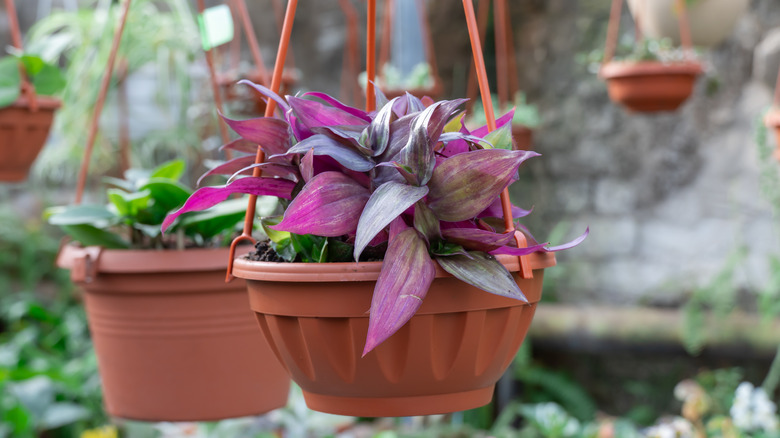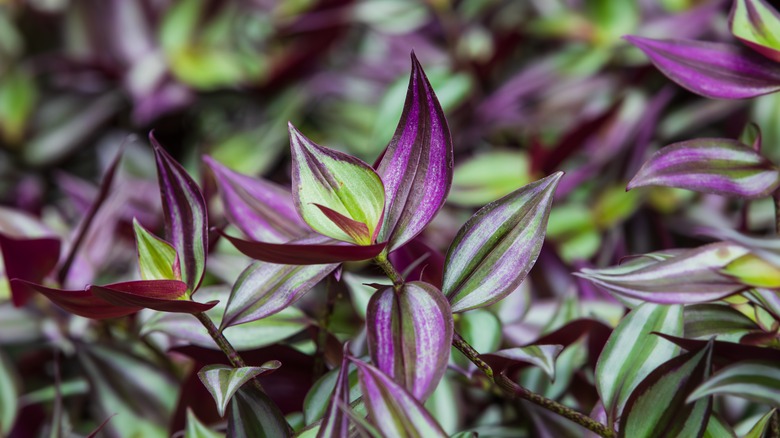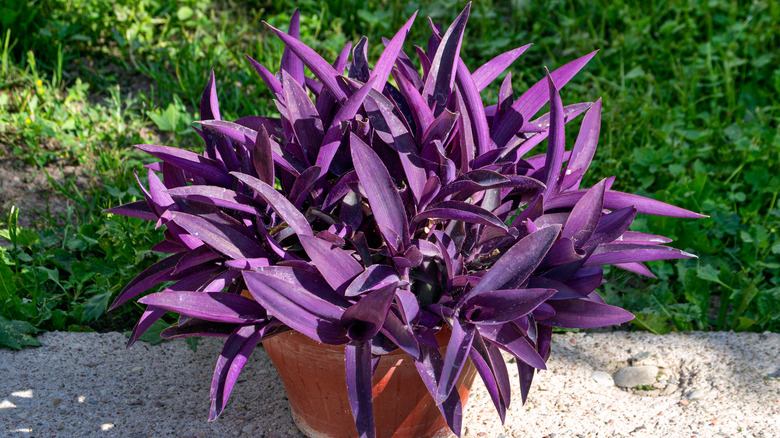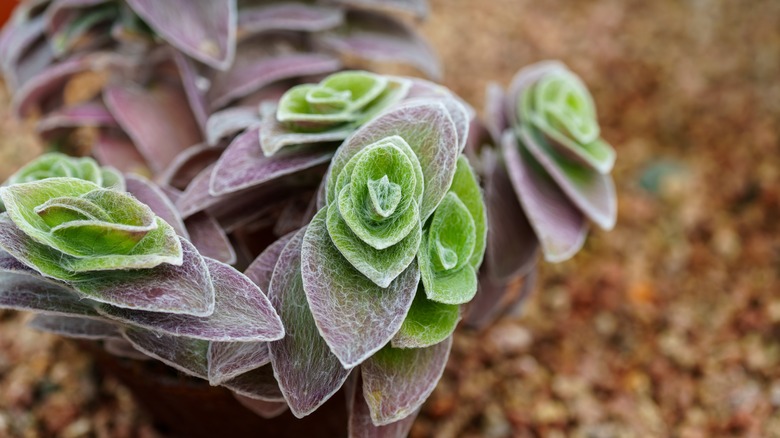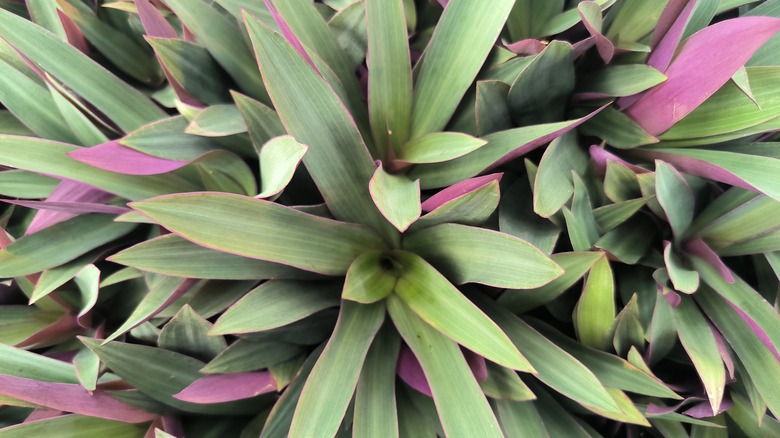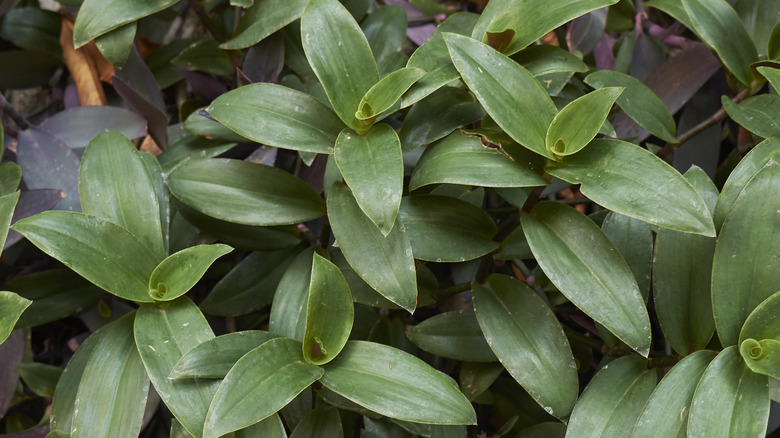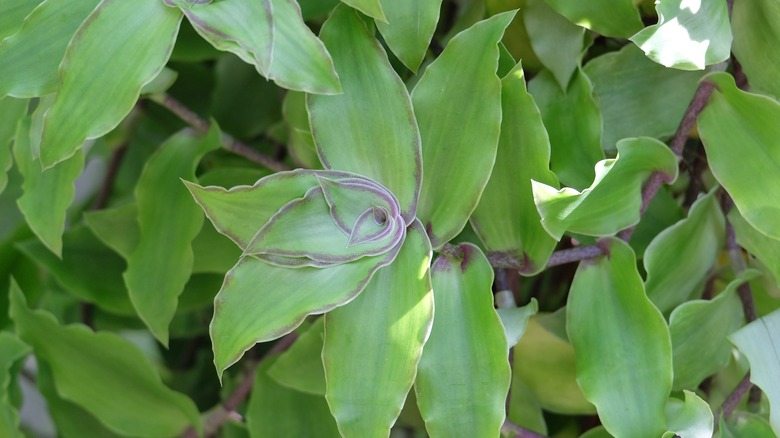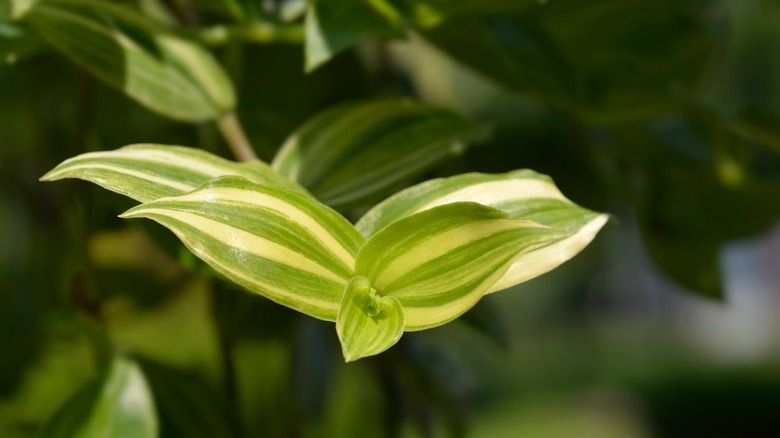Add Sparkle To Your Home With Color-Changing Inch Plant Varieties
If you're looking for colorful houseplants that will perk up your indoor space, inch plants are a great choice. There are several different varieties of inch plants, most of them belonging to the Tradescantia genus. While many of these plant varieties share a similar look, they all boast minor, colorful differences that make each one unique.
Some inch plant varieties will change color based on how much light they receive — this is why moving your plants around to adapt to lighting changes is so important. Generally, brighter, direct light will result in purple or pink-toned foliage. This is your plant's way of protecting itself from the sun. With lower light, your plant will often revert to plain green. In some cases, such as with the Blushing Bride variety, cooler temperatures can also cause a change in color. Either way, if you're looking for a little indoor sparkle, these inch plants are sure to brighten your environment.
Variegated inch plant
Variegated inch plant (Tradescantia zebrina), sometimes called wandering dude, is a common houseplant beloved for its jewel-toned foliage that's dark green with deep purple and striking silver stripes. The inch plant can be grown as a perennial in USDA Hardiness Zones 9 to 11 and prefers an environment with bright, indirect light and moist but well-draining soil. When exposed to intense, direct light for prolonged periods, a wandering dude can lose its variegation, turning solid dark purple.
Nanouk
Nanouk (Tradescantia fluminensis 'Nanouk') is a beautiful inch plant variety that features stunning green and pink foliage with cream colored stripes and purple undersides. As one of the most colorful inch plant varieties, Nanouk, sometimes called Bubblegum, is a beautiful addition to your home or garden. The plant is hardy in zones 9 through 12 and will thrive in an area where it can get bright, indirect light for six to eight hours per day. Nanouk will still survive in low-light conditions; however, it will likely remove the color from your plant, leaving you with solid green foliage instead.
Purple heart plant
Purple heart plant (Tradescantia pallida) can be grown as a house plant or a tender perennial in zones 7 through 11. When the plant is given access to full sun, it will maintain its rich purple foliage. However, when grown in shade, the purple heart plant fades to a rich green color instead. This color change may happen to indoor plants during the winter as the light conditions differ — you can add a grow light to help combat this. In the summer, your purple heart plant may produce small pink flowers.
White Velvet
White velvet (Tradescantia sillamontana) grows upright and features small, oval-shaped green leaves with reddish purple undersides. The foliage has a silvery-gray look to it as a result of being covered in white fuzz. When given access to bright, direct light, the green leaves may develop a subtle purple hue. White velvet makes for a visually interesting house plant, but can also be grown as an outdoor perennial, and is hardy in zones 10 to 12.
Oyster Plant
Oyster plant (Tradescantia spathacea) has long, spiky foliage that's green on top with a purple underside. On some plants, the green leaves also feature light yellowish stripes. When given access to bright, direct light, these colors will stay bright and vibrant. However, in lower light conditions, you'll likely see your oyster plant revert to a pale green color. Although commonly grown as a houseplant, the oyster plant is also hardy in zones 9 to 11 and can be used as a groundcover for outdoor garden beds.
Red Hill
Red Hill (tradescantia cerinthoides) features oval-shaped green leaves with a dark purplish-gray underside. When given access to intense, bright light, red hill plants may develop a striking red stripe along the leaves' central veins. Red Hill makes an excellent houseplant and will add some fun, visual interest to any room when placed in front of a sunny window. They can also be grown outdoors, but are not frost-hardy and will need to be brought inside for the winter.
Burgundy inch plant
Burgundy inch plant (Tradescantia 'Burgundy') is nearly identical to Variegated inch plant (Tradescantia zebrina). Still, you can tell them apart when the plants flower, as each produces a different color blossom. The leaves of the burgundy inch plant are primarily dark purplish red with silver/green stripes and purple undersides. Newly matured leaves can develop yellow stripes that turn purple in intense light.
Variegated Dragon's Tail
Variegated Dragon's Tail (Callisia soconuscensis) has a lot of color variety, making it a gorgeous addition to your home. The foliage is primarily green, but, depending on light conditions, new leaves can emerge with white, yellow, or red and purple color variations on variegated plants. Give your dragon's tail access to bright light/partial shade and moist, well-draining soil for success. When grown outdoors, the plant is hardy in zones 10 through 12.
Blushing Bride
Like the majority of plants on this list, Blushing Bride (Tradescantia × andersoniana 'Blushing Bride') is the kind of indoor plant you want in your home if your space needs a bright pop of color. The foliage starts out green but turns pink or red when it's left in a cool environment. The plant can tolerate temperatures as low as 50 degrees Fahrenheit, but prefers to be around 60 to 75 degrees. Some plant owners on social media have even experimented with putting their blushing bride in the fridge to encourage the color change. The house plant will thrive in bright, indirect light with moist, but well-draining soil.
Yellow Hill
Yellow hill (Tradescantia fluminensis 'Yellow Hill') has interesting foliage that starts as a green or yellowish-green color. The leaves develop pale yellow stripes that, in some cases, cover the entire leaf. When exposed to intense light, Yellow Hill inch plants can develop a pale pink on the underside of the leaves. The plant grows quickly when given access to indirect light and sandy, well-draining soil.
